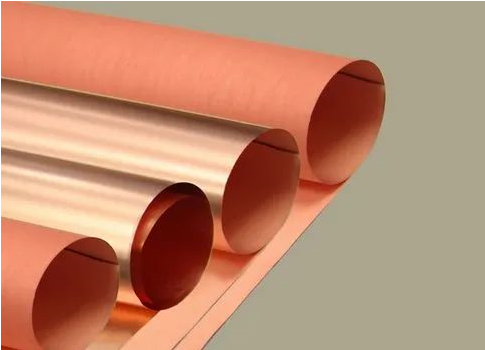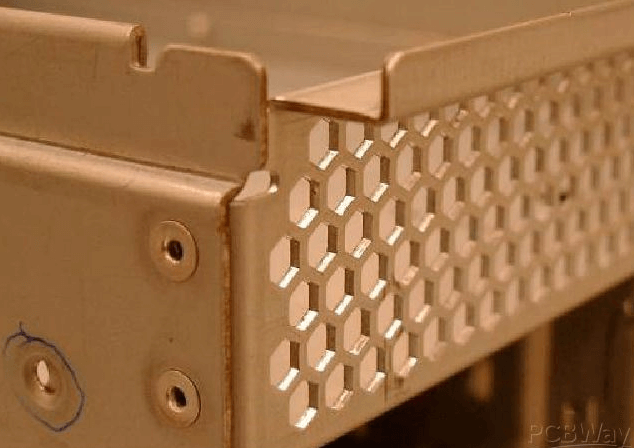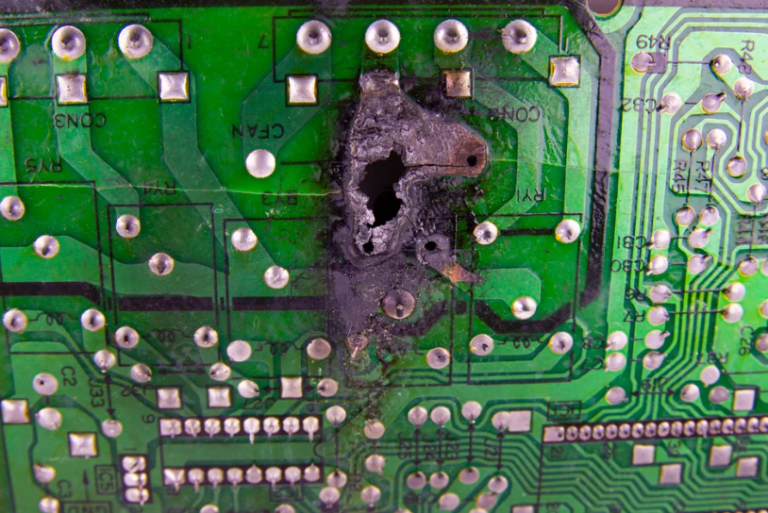Mechanical drilling of micro-hole processing technology for composite materials of PCB printed circuit boards
With the rapid development of electronic technology, electronic products tend to be miniaturized, complex, and more and more complete in functions. Therefore, for PCB printed circuit boards, they have also developed from the original single-sided board to double-sided boards and multi-layer boards.
High precision, high density, high reliability, and miniaturization have become the general trend of the development of PCB printed circuit boards.
Therefore, the corresponding circuit board processing apertures are also increasing, while the apertures are getting smaller and smaller, and the spacing between holes is getting smaller and smaller.
The specifications of printed circuit boards are relatively complex and there are many types of products.
At present, the most widely used in printed circuit boards is the micro-hole processing technology of epoxy resin-based composite materials (small holes with a diameter of less than 0.6mm and micro-holes with a diameter of less than 0.3mm).
Composite circuit boards are brittle and hard, with high fiber strength, high toughness, low interlayer shear strength, anisotropy, poor thermal conductivity, and a large difference in the thermal expansion coefficients of fibers and resins.
When the cutting temperature is high, it is easy to generate thermal stress at the interface between the fiber and the matrix around the cutting area; when the temperature is too high, the resin melts and sticks to the cutting edge, resulting in difficulties in processing and chip removal. The cutting force of drilling composite materials is very uneven, which is prone to defects such as delamination, burrs and splitting, and the processing quality is difficult to guarantee. This material is extremely abrasive to the processing tools, and the tool wear is quite serious.

The tool wear in turn will lead to greater cutting force and heat generation.
If the heat cannot be dissipated in time, it will cause the melting of low-melting-point components in the PCB material and the peeling between the composite layers. Therefore, PCB composite materials are difficult to process non-metallic composite materials, and their processing mechanism is completely different from that of metal materials. At present, the main methods for micro-hole processing are mechanical drilling and laser drilling.
This article introduces mechanical drilling.
When mechanically drilling PCB materials, the processing efficiency is high, the hole positioning is accurate, and the hole quality is also high. However, when drilling micro-holes, the drill bit is too small in diameter and is very easy to break. Defects such as material delamination, hole wall damage, burrs and stains may also occur during the drilling process.
All kinds of problems that occur during mechanical drilling are directly or indirectly related to axial force and cutting torque.
The main factors affecting axial force and torque are feed rate and cutting speed. The shape of the fiber bundle and the presence or absence of prefabricated holes also affect axial force and torque. The axial force and torque increase with the increase of feed rate and cutting speed. With the increase of feed rate, the thickness of the cutting layer increases, and with the increase of cutting speed, the number of fibers cut per unit time increases, and the tool wear increases rapidly, so the axial force and torque increase.
The axial force can be divided into static component FS and dynamic component FD.
The components of the axial force have different effects on the cutting edge. The static component FS of the axial force affects the cutting of the chisel edge, while the dynamic component FD mainly affects the cutting of the main cutting edge. The dynamic component FD has a greater effect on the surface roughness than the static component FS. The axial force increases with the feed rate, and the effect of the cutting speed on the axial force is not very obvious. In addition, in the case of prefabricated holes, when the hole diameter is less than 0.4mm, the static component FS decreases sharply with the increase of the hole diameter, while the dynamic component FD decreases in a relatively flat trend.
Due to the different processing properties of the composite matrix and reinforcing fiber, the matrix resin and fiber have different effects on the axial force during mechanical drilling. Khashaba studied the effects of matrix and fiber types on axial force and torque, and found that the shape of the fiber bundle has a significant effect on the axial force, while the matrix resin type has little effect on the axial force.
The wear of PCB composite micro-drills includes chemical wear and friction wear.
Chemical wear is caused by the chemical erosion of the Co binder in the micro-drill material WC-Co cemented carbide by the high-temperature decomposition products released from the PCB material. At around 300°C, this erosion reaction is already quite obvious. When the drilling speed is lower than 150mm/min, chemical wear is no longer the main form of wear, and friction wear becomes the main form of wear.
The wear of PCB micro-drills is also related to the cutting speed, feed rate and the ratio of the drill radius to the fiber bundle width. The research of Inoue et al. shows that the ratio of the drill radius to the fiber bundle (glass fiber) width has a greater impact on the tool life. The larger the ratio, the larger the fiber bundle width cut by the tool, and the tool wear also increases accordingly.
In actual application, a new drill needs to be ground after drilling 2,500 holes, a drill with one grinding needs to be re-ground after drilling 2,000 holes, a drill with two grinding needs to be re-ground after drilling 1,500 holes, and a drill with three grinding is scrapped after drilling 1,000 holes.
During the PCB micro-hole processing, the axial force and torque increase with the increase of feed rate and drilling depth, and the main reason is related to the chip removal state.
As the drilling depth increases, the chip removal becomes difficult. In this case, the cutting temperature rises, the resin material melts and firmly bonds the glass fiber and copper foil fragments to form a tough cutting body. This cutting body has an affinity with the PCB matrix material. Once this cutting body is produced, the chip removal stops, and the axial force and torque increase sharply, causing the micro-hole drill to break. The breaking forms of PCB micro-hole drills include compression breaking, torsion breaking, and compression torsion breaking, and generally both coexist. The breaking mechanism is mainly chip blockage, which is the key factor causing the increase in drilling torque. Reducing axial force and cutting torque is the key to reducing micro-hole drill bit breakage.

Drilling damage forms include: delamination, hole wall damage, stains, and burrs. The following are countermeasures:
(1) Delamination
Various damages may occur during mechanical drilling of GFRP (glass fiber reinforced) laminates. The most serious of these is interlayer delamination, which leads to a sharp drop in the performance of the material around the hole wall.
The axial force applied by the drill tip is the main cause of delamination. Delamination can be divided into drilling delamination and drilling out delamination. Drilling delamination is when the drill bit cutting edge contacts the laminate, the cutting force acting in the circumferential direction generates a rotary cutting force in the axial direction through the drill bit cutting groove to separate the layers, forming a delamination area on the upper surface of the laminate; drilling out delamination is when the drill bit approaches the bottom of the laminate, the thickness of the uncut material becomes thinner and the ability to resist deformation is further reduced.
Delamination occurs where the load exceeds the bonding force between the laminates, and this occurs before the laminate is drilled through.
Axial force is the main cause of delamination. Cutting speed, substrate and fiber bundle type also have an impact on delamination. The drilling and drilling out delamination of epoxy composite materials decrease with the increase of drilling speed, and the degree of damage of drilling out delamination is greater than that of drilling in delamination. The main measures to reduce delamination are: using variable feed technology, pre-setting guide holes, using pads, and using viscous dampers when drilling without support.
(2) Hole wall damage
Drilling microholes on composite PCBs, various forms of damage around the holes lead to reduced insulation performance between holes and cracking of the copper layer on the hole wall after the holes are metallized. The relative angle between the cutting direction and the fiber direction, the thickness of the glass fiber bundle on the hole wall, the position of the drill point on the glass cloth, etc. will have different effects on hole wall damage.
Literature 6 uses a 1.0mm diameter drill bit and a rotation speed of 5000rpm to drill glass fiber/epoxy resin composite materials (8 layers staggered at 90°, 0.2mm per layer). The test shows that the degree of damage around each layer of drilling is different. The fiber wrinkles in the 1st, 3rd, 5th, 7th, and 8th layers are very prominent, with the maximum protrusion reaching 30μm; while the fiber wrinkles in the 2nd, 4th, and 6th layers are relatively small, with the minimum being less than 5μm.
In the overlapping and intersecting area of the weft and warp yarns, the fiber bundle thickness is the largest at the fiber angle of 45°, and the hole wall damage width is the largest; while in the central area, the maximum damage width occurs at the fiber angle close to 90°.
Aoyama et al. studied the effect of the tool main deflection angle on the surface roughness of the processed hole wall and found that when the main deflection angle is 30°, the hole wall surface roughness is the largest, reaching 50μm.

(3) Stains
When drilling composite materials mechanically, the large amount of cutting heat generated by the extrusion of the drill bit chisel edge and the composite material, the friction between the inverted cone and the hole wall, and the friction between the tiny chips embedded between the drill bit edge and the hole wall and the rotation of the drill bit causes the resin to melt and adhere to the interlayer of the composite material or the copper foil at the hole mouth and the hole wall, forming stains. Appropriate cutting amount and grinding of micro drills can reduce the generation of stains and reduce the stain index.
(4) Burrs
When drilling composite materials, due to the transfer of stress, before the drill bit reaches the bottom of the hole, many cracks will be generated in the reinforcement material and matrix in front of the drill bit, causing the reinforcement material to debond from the matrix and pull out, resulting in the reinforcement material cannot be cut off from the root. When the hole is drilled through, these reinforcement materials that have not been cut off from the root cannot be removed together with the chips, but fall to the edge of the hole. The matrix softens and flows due to the cutting heat, and then re-condenses on these reinforcement materials that fall to the edge of the hole, forming burrs. The size of the exit burr is mainly affected by the drilling force and drilling temperature.







